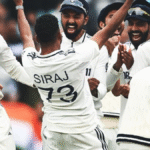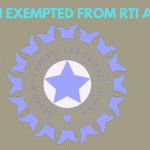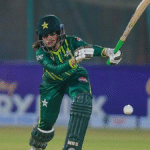The International Cricket Council (ICC) has made updates to the Playing Conditions for T20 International, with the main change being boundary catches, and the implementation of stop clocks in Test matches are among the significant updates.
Additionally, the new playing conditions encompass modifications to the concussion replacement protocols, the DRS wicket zone, and international short runs.
These amendments were proposed by the ICC Men’s Cricket Committee, chaired by Sourav Ganguly, which includes participants with experience in over 2000 international in over 2000 international matches across its member nations.
Playing Conditions Modifications
- Number of Balls per ODI Innings
For the initial 34 overs of an ODI innings, two new balls will be utilized. After this period, the fielding team will select one of the balls to use for the remaining overs.
- Boundary Catches
The revised playing conditions now stipulate that a fielder who makes airborne contact with the ball while beyond the boundary must land and remain within the boundary area. If a fielder makes initial contact with the ball and subsequently exits the field of play, they may only make contact with the ball again while airborne beyond the boundary.
- Stop Clock
Following a successful Implementation in white-ball cricket, Test cricket will also notice a stop clock. The bowling team must be prepared to deliver the first ball of their subsequent over within 6o seconds after the completion of the previous over.
If the bowling team fails to comply for the third time in an innings (after receiving two warnings,) a penalty of five runs will be imposed on the fielding team for each instance of non-compliance. The two warning sanctions will reset to zero after 8o overs have been bowled, coinciding with the availability of an new ball, and will reset again after any subsequent blocks of 80 overs in that innings.
- Calculated Short runs
Adding to the existing five-run penalty for a deliberate short run, the fielding team will also select which of the two batters will take strict for the subsequent delivery.
- Decision Review System Wicket Zone
The wicket zone will now correspond to the precise outline of the stumps and bails.
- Concussion Protocols
There are two changes to the concussion protocols. Teams will now be obligated to designate their specific concussion replacements for the match. This limits the advantage that home teams previously enjoyed, as they have typically been able to select from a broader pool of potential replacements.
A player diagnosed with a concussion during a match must adhere to a minimum stand-down period of at least seven days before resuming play. The adjustment has been advised by the ICC Medical Advisory Committee to enhance players’ safety and well-being.
- Additional Playing Conditions to be tested by Full Members
Starting in October and lasting for an initial period of six months, there will be further modifications.
- Substitute Players
A player who incurs a significant injury on the field at any point after the match has commenced (including any pre-match warm-up) may be substituted for the remainder of the match by a fully participating player of similar capability.
- Wide Ball Trial
To provide greater leniency for bowlers who observe the batter shifting position before or during a delivery, new wide ball regulations will trialled. As part of these modifications, the position of the batter’s legs at the moment of delivery will now serve as the reference point for determining a wide, even if the batter later moves to the off side.
The trial will establish that a ball passing the popping crease between the leg stump and the protected area market will not be deemed a Wide. To facilitate this, the line of the protected area marker will be extended to the popping crease, serving as a guide for the umpires.







